The Eastman Dry Plate & Film Co./The Eastman Co.
Interchangeable View
Eastman
Catalog, 1888, p. 4
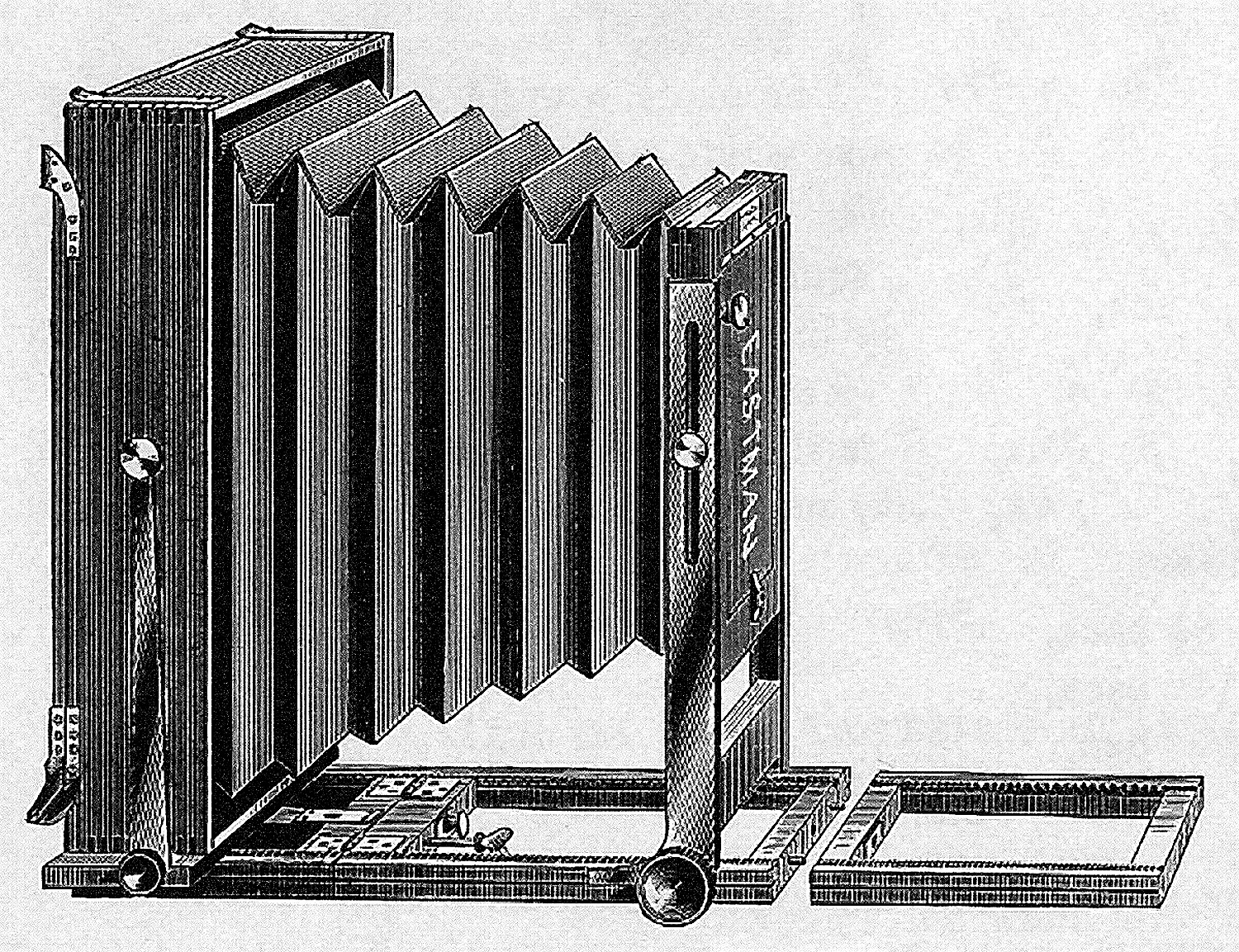
5 x 7" (an early Eastman Dry
Plate and Film Co. (1884-1889) example, c.1885)
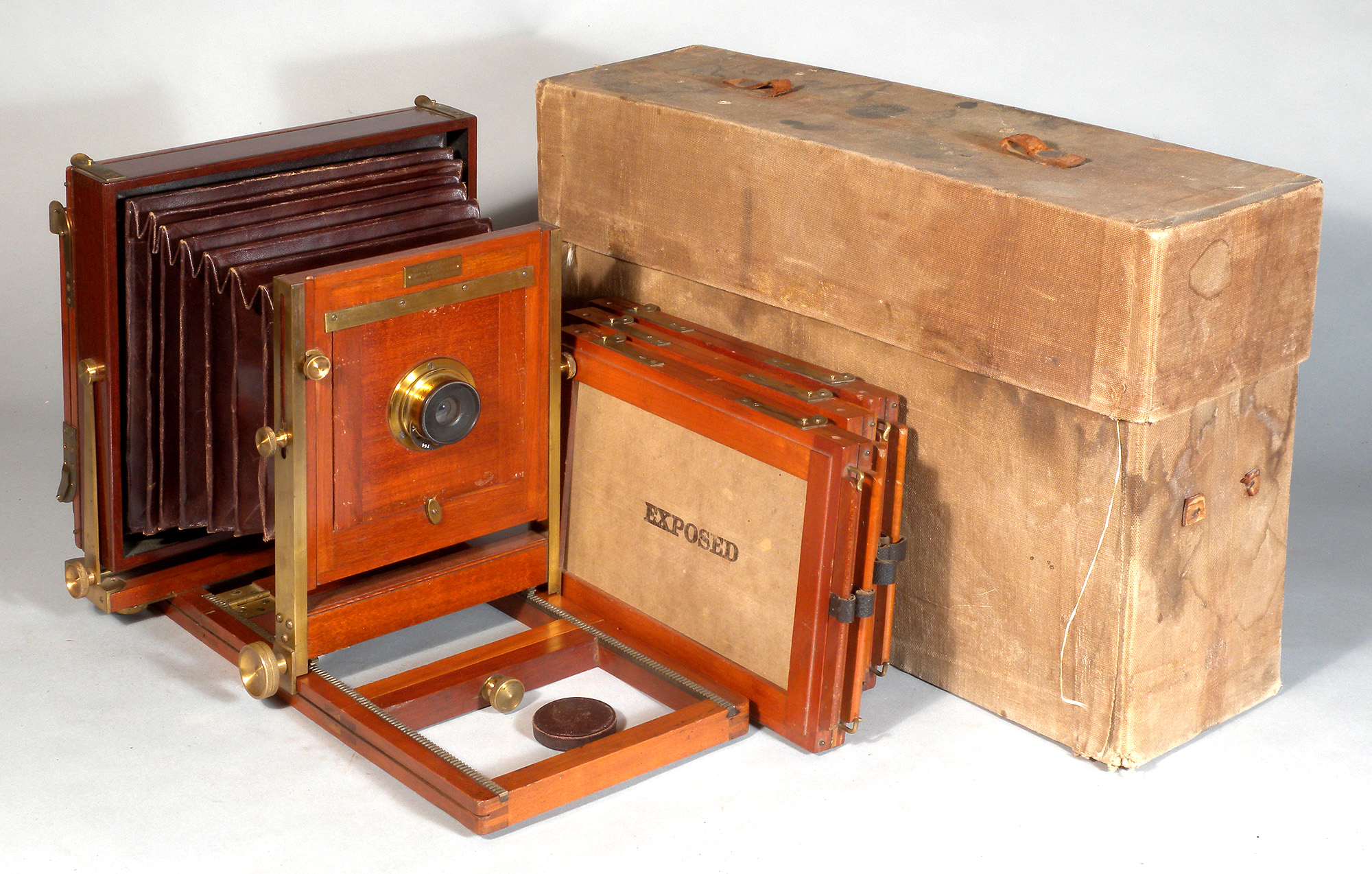
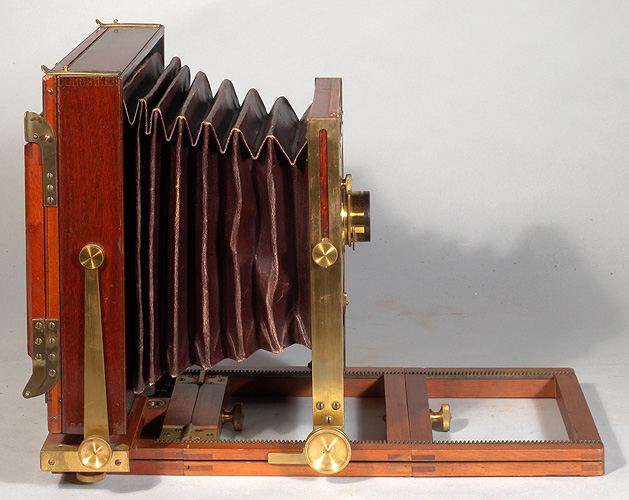
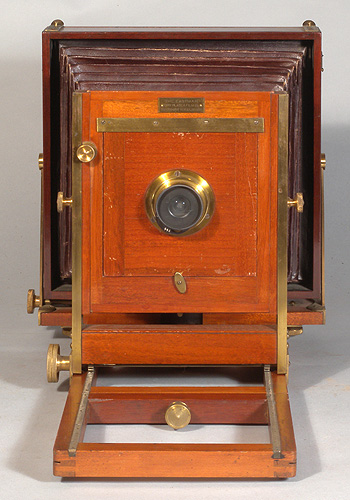
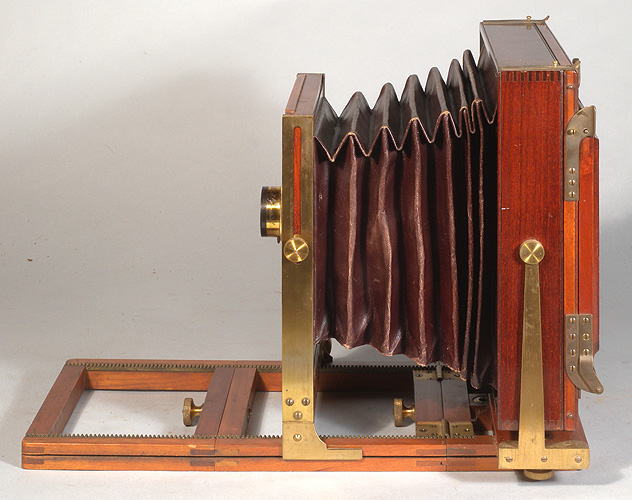
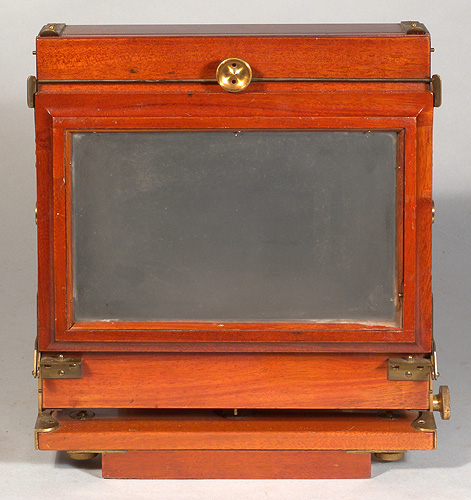
Date Introduced: - ;
Years Manufactured: c.1884-1891
Construction: front focus
via rack and pinion (two gear tracks on top of base rails);
double swing; reversing by removable back; three-piece lens board
Materials: mahogany body; cherry base; red
leather bellows; brass hardware
Sizes Offered:
4 ½x5 ½; 4 ½x6 ½; 5x7; 5x8; 6 ½x8 ½; 8x10; 10x12; 11x14; 14x17;
17x20; 18x22; 20x24
Notes: Eastman had an
apparently active branch in England, and this model was sold
there as well as U.S.; at
least one example was observed having a celluloid label marked London
instead of Rochester, NY, as these examples here. It was offered
with either flip-up ground glass or spring loaded ground glass (1888
catalog, p. 7), but all or nearly all of the extant examples are
flip-up. The flip-up style was identical to English cameras of the
period, and used English-style plate-holders,
in that, once the ground glass has been flipped out of the way, the
holder is placed flat on the back about two inches short of its final
position, then pushed home (rather than being pushed its entire length
under a spring loaded ground glass). These facts have prompted
speculation that the camera may have been designed or manufactured in
England. Either way, this camera is made
with very tight tolerances - an extremely well-made instrument, and
almost all of the examples in existence are as tight and functional
today as when they were manufactured 120 years ago.
References:
Photographic Lenses and How to Select Them, James W. Queen & Co.
(Philadelphia, PA), 1887, p. 33
Photographic Materials and Apparatus, Eastman
Dry Plate & Film Co. (Rochester, NY) Catalog, January 1888, p. 2-7
The International Annual of Anthony's Photographic Bulletin,
Vol. I, 1888, W. J. Harrison and A. H.
Elliot, eds., E. & H. T. Anthony & Co. (New York, NY), July 1888, ads p.
27; 84
Catalogue Illustrated, W.D. Gatchel
(St. Louis) Catalog, 1888, p. 30-32
American Annual of Photography and Photographic Times Almanac for
1890, The Scovill & Adams Co. (New York, NY),
ads p. 48
Photographic Material,
Catalogue O & P, James W. Queen & Co. (Philadelphia,
PA), 1891, pp. 47-48
5 x 8" (Eastman Dry Plate & Film Co.
(1884-1889)
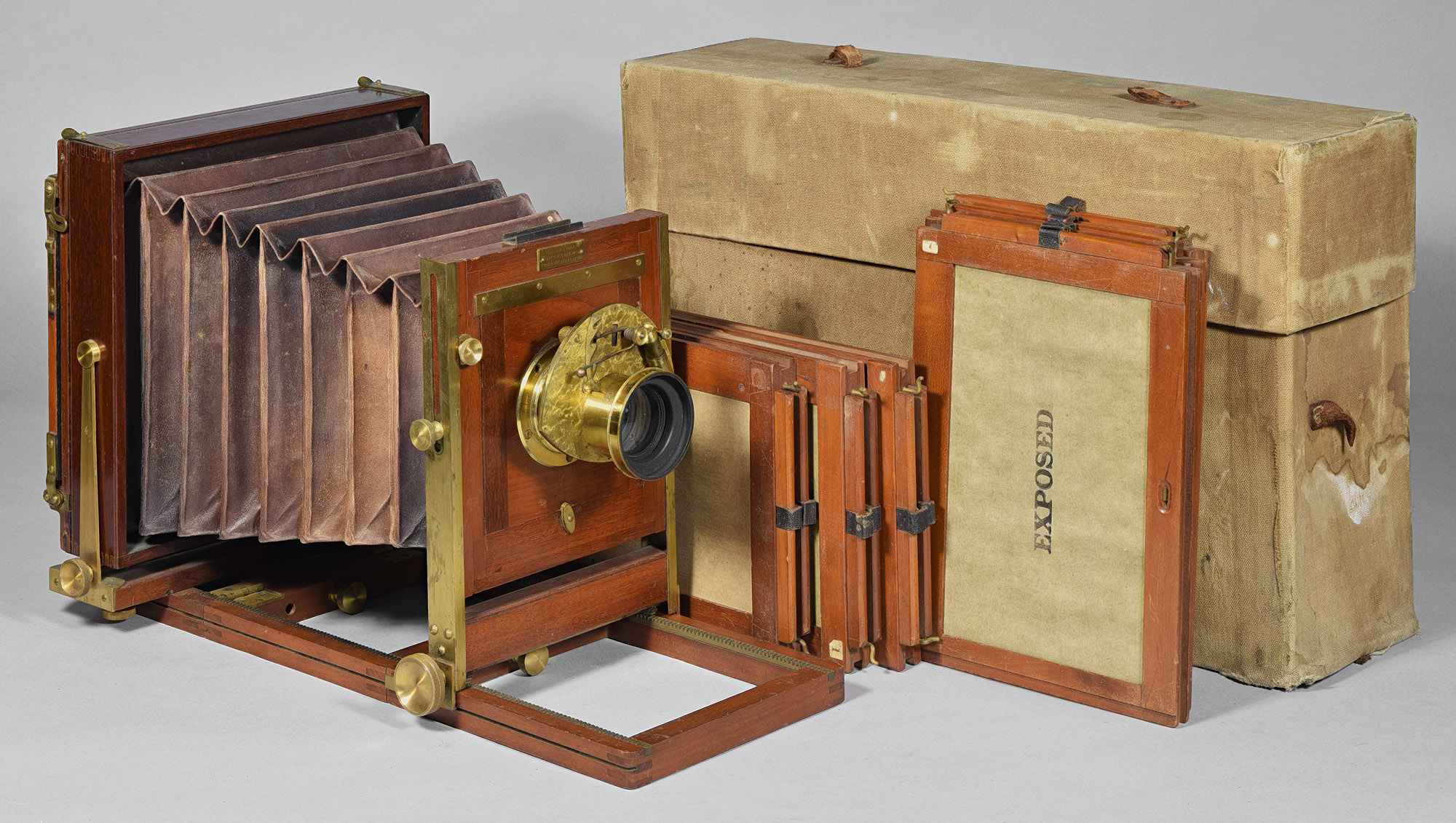
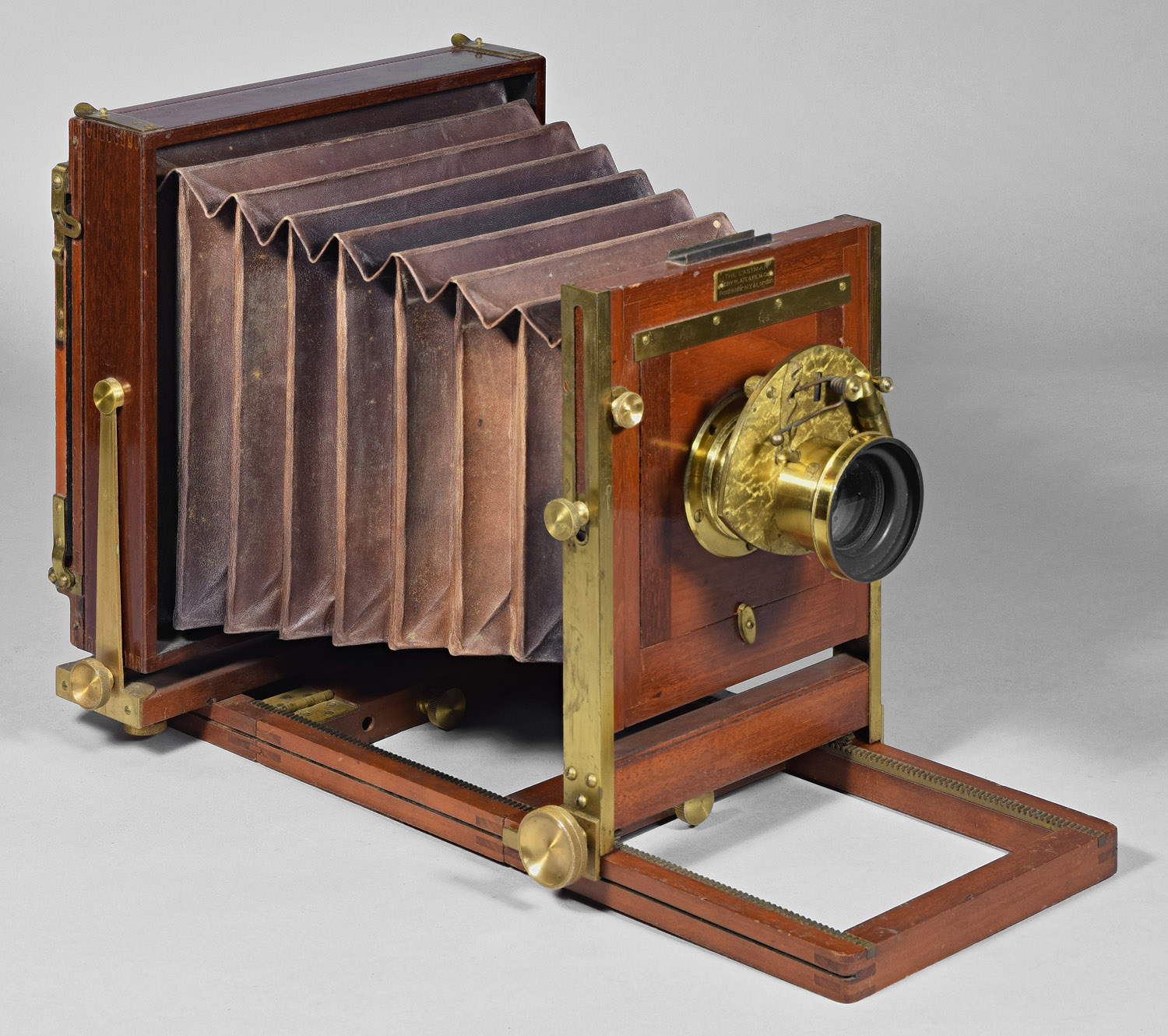
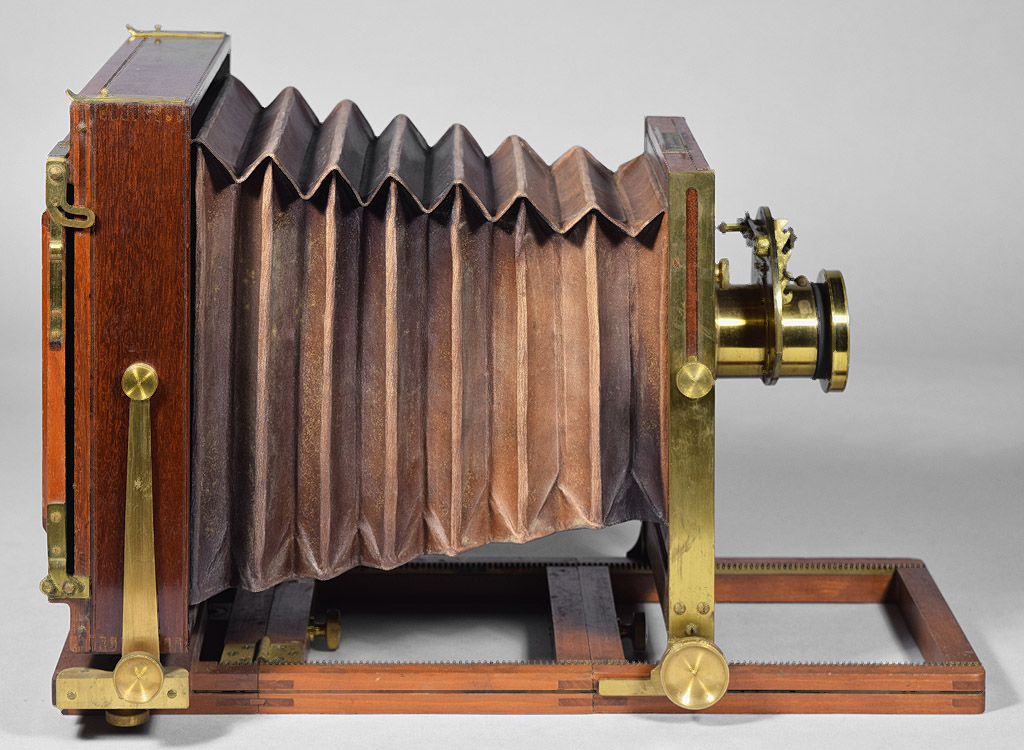
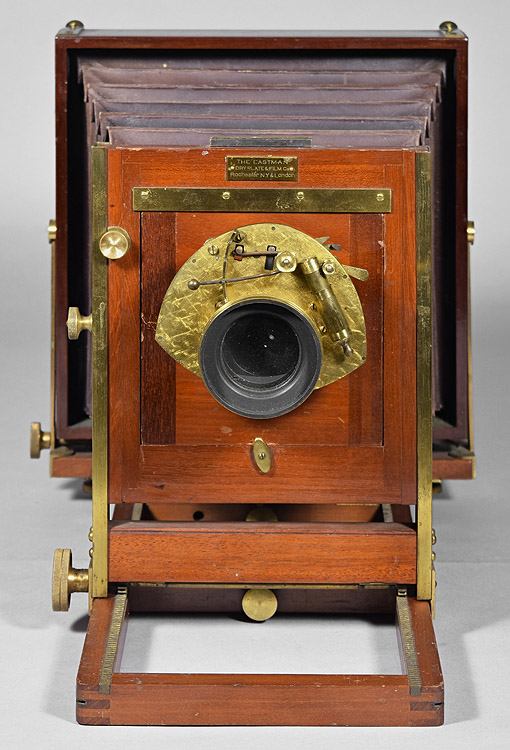
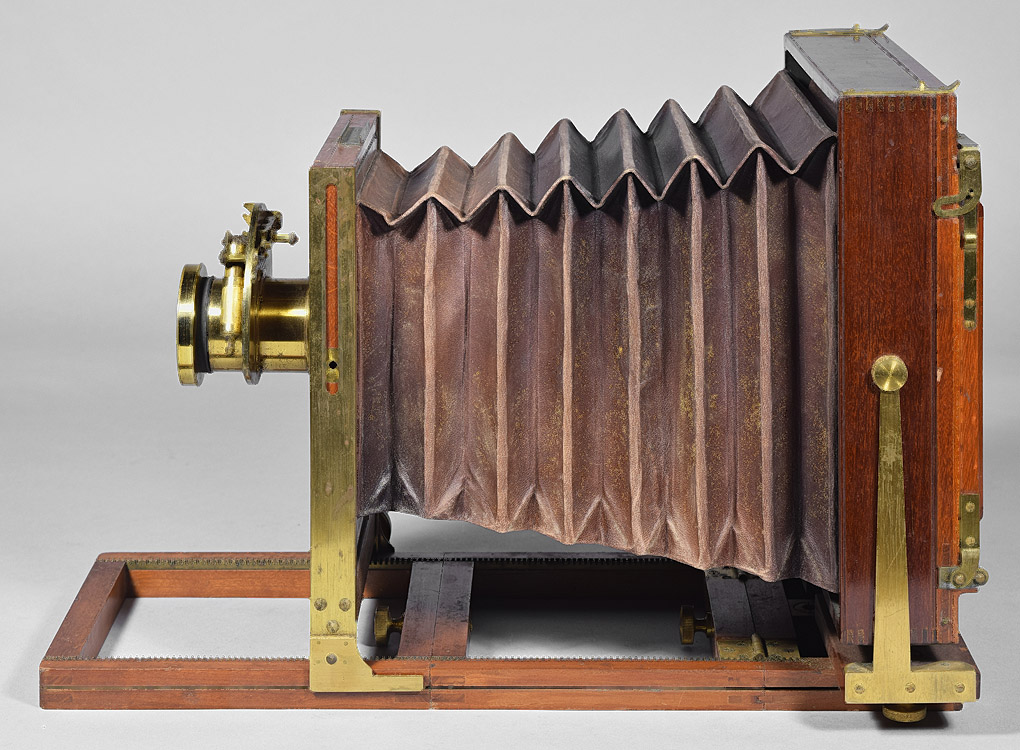
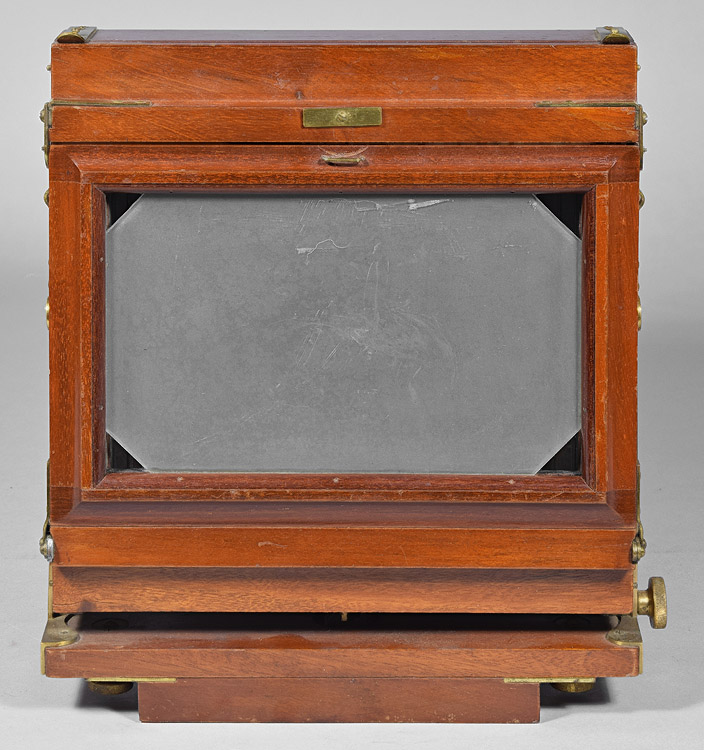
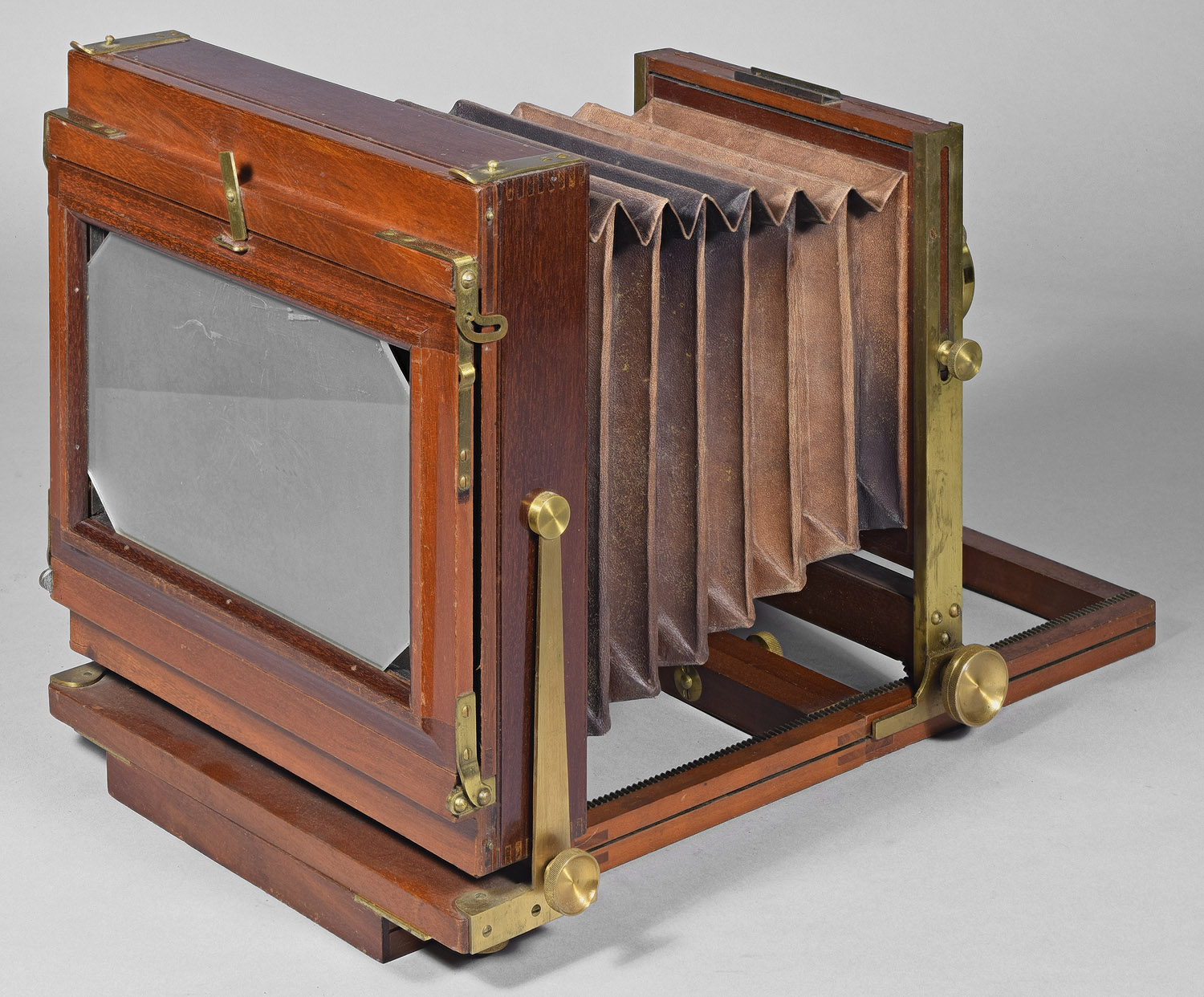
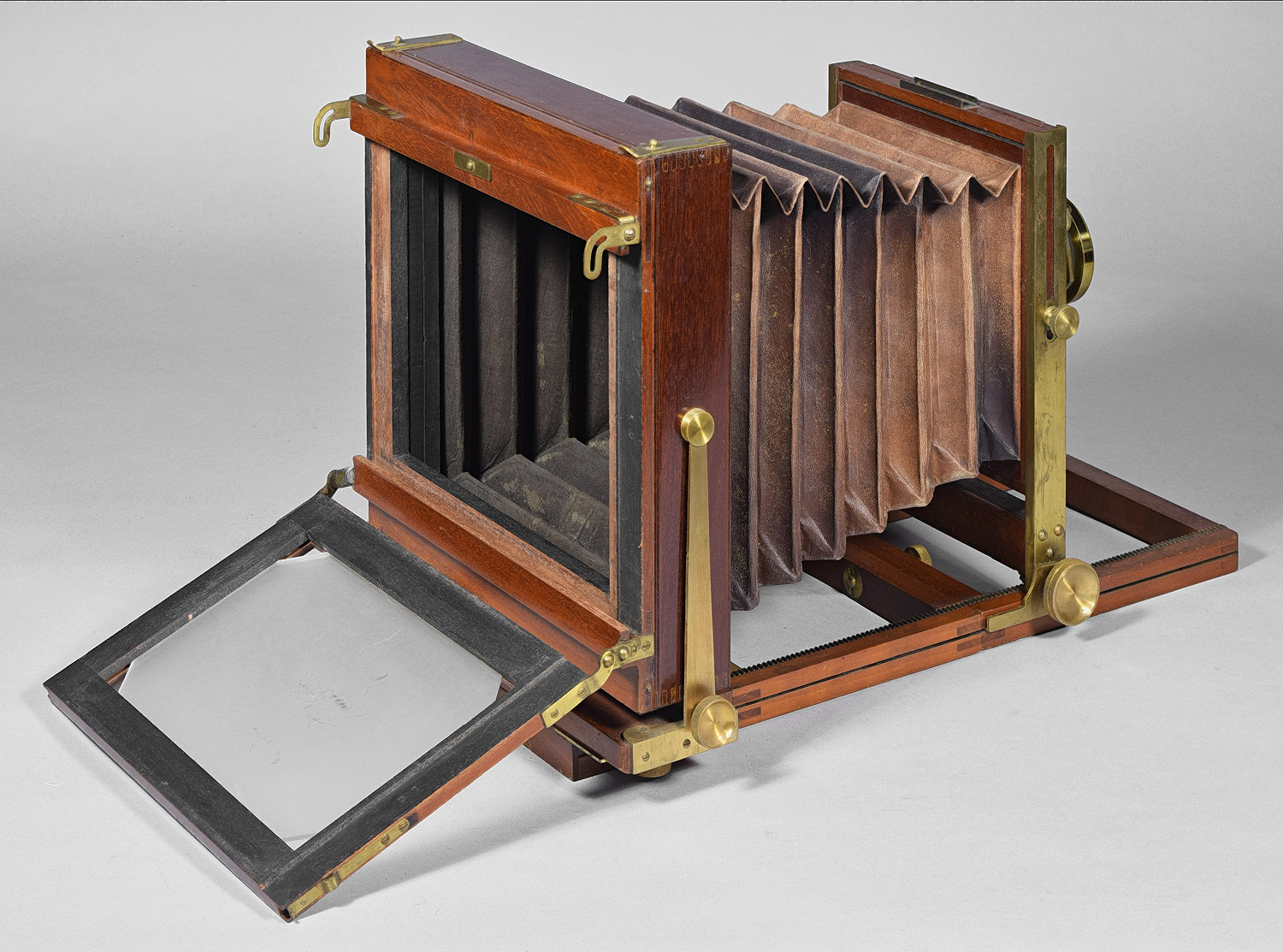
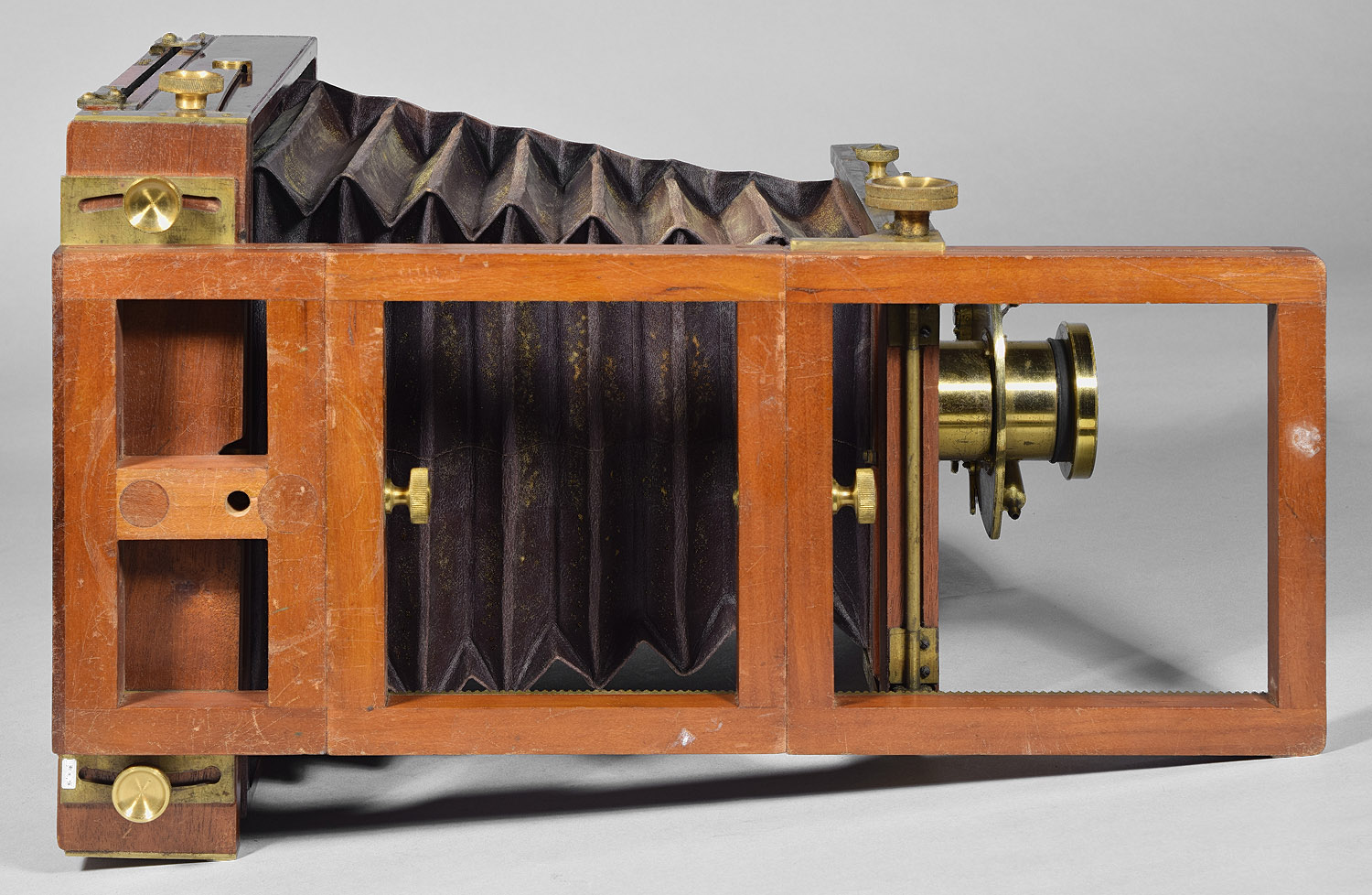
Label, brass, top front
of front standard: "The Eastman Dry Plate & Film Co., Rochester, N.Y. &
London".
The Eastman Dry Plate & Film Co. manufactured
from 1884-1889, being renamed The Eastman Co. in 1889.

When the switch is in the right position, as
in this photo (see black arrow), a tab is extended (see white arrow) on
each side of the plate holder to secure the plates during transport and
exposure.
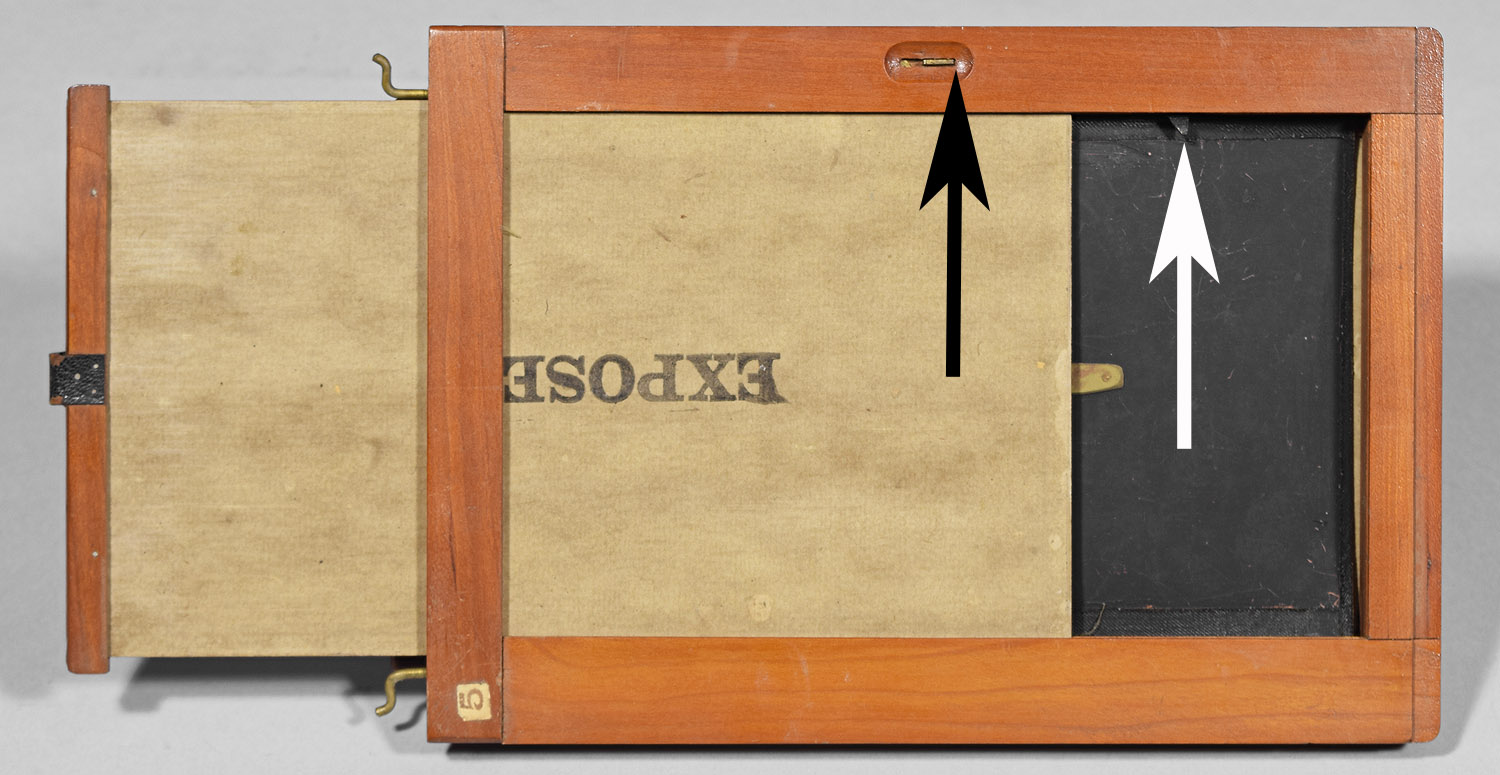
When the the switch is pushed to the left
position (see black arrow), the tab retracts, allowing the plate to drop
out or to be put in without impediment.
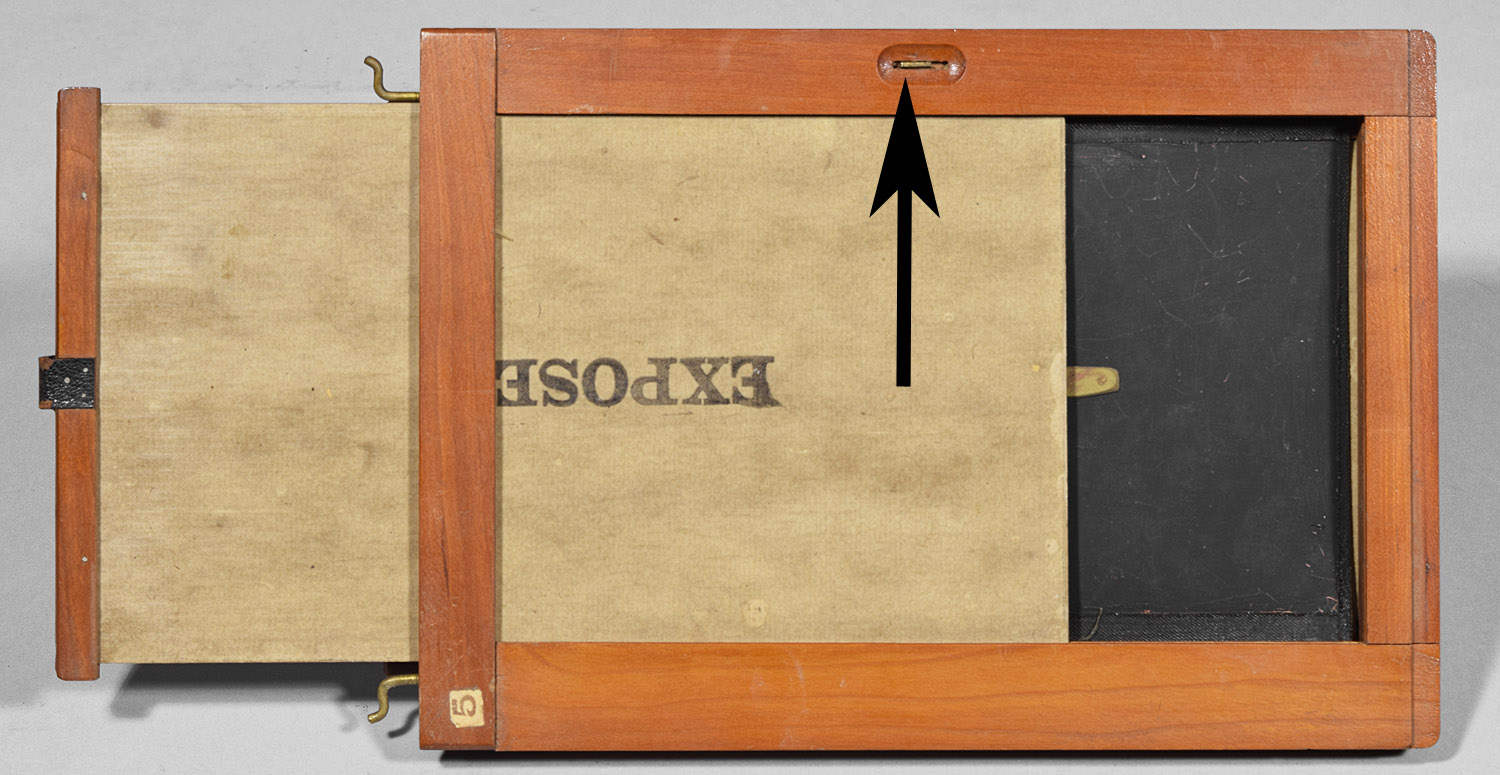
6 ½ x 8 ½" (The Eastman Co. (1889-1892))
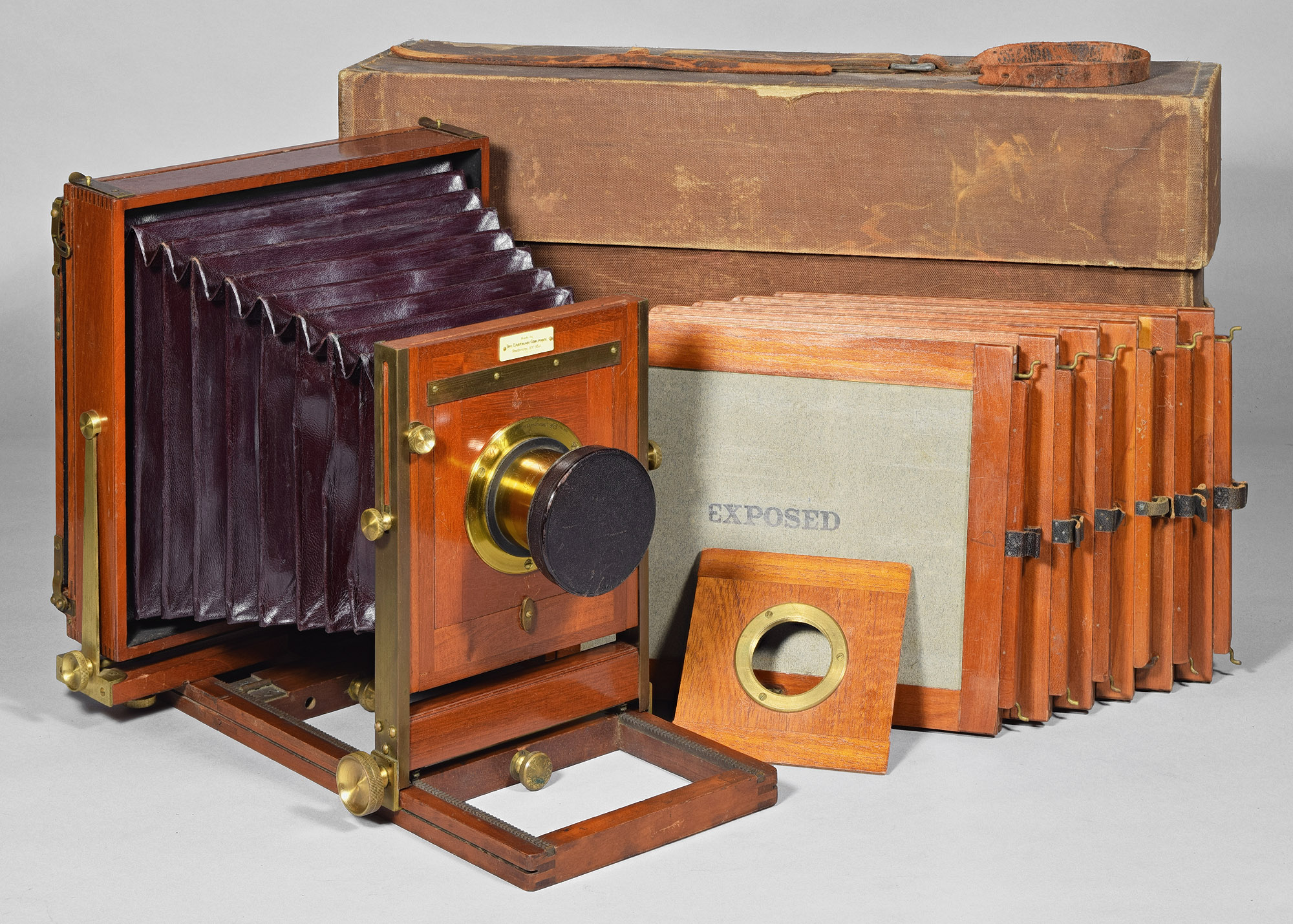
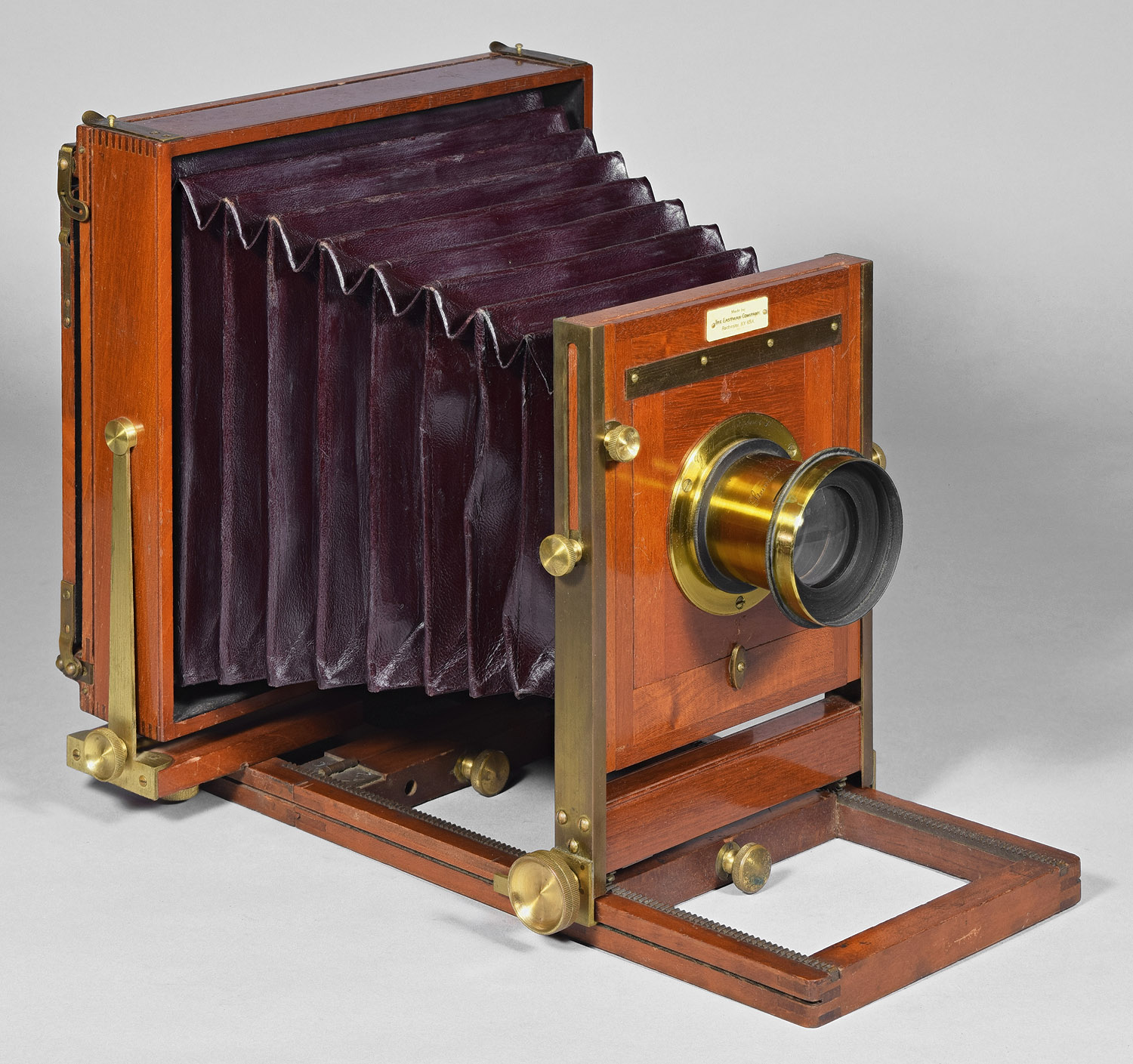
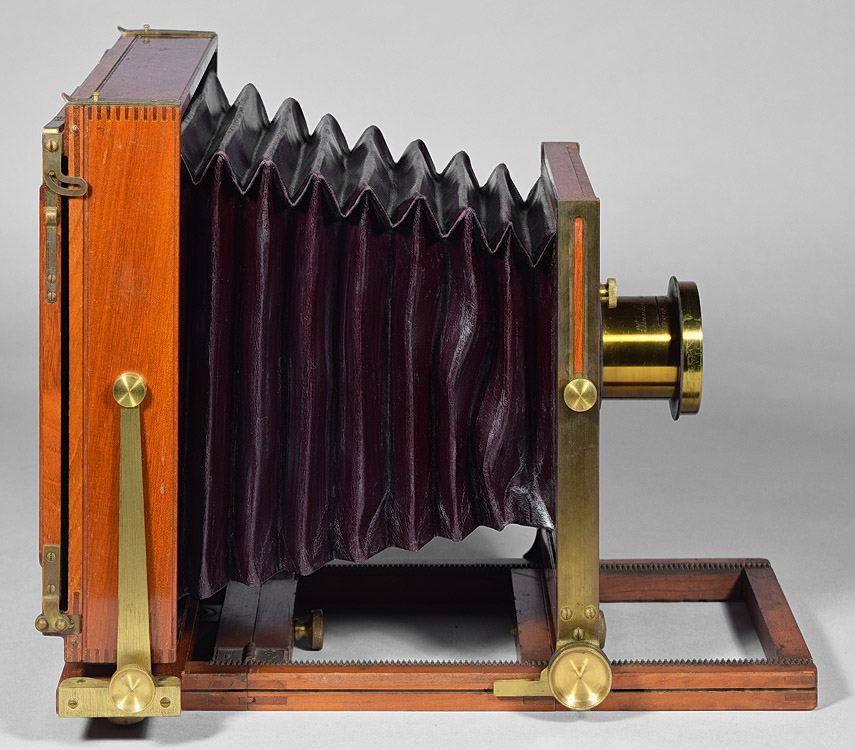
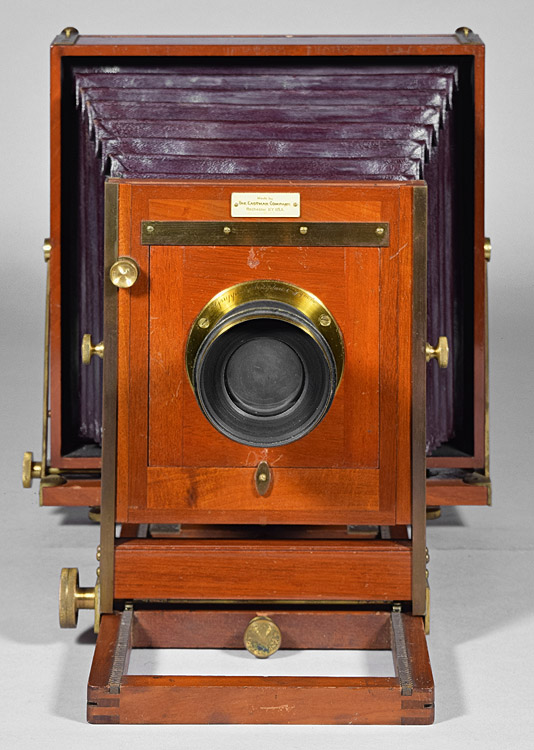
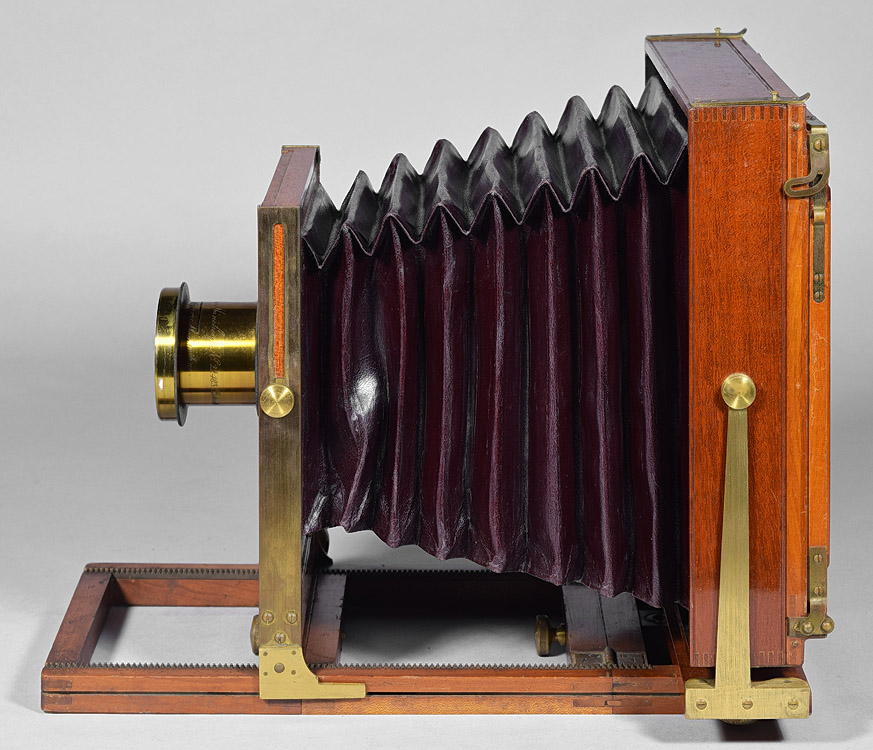
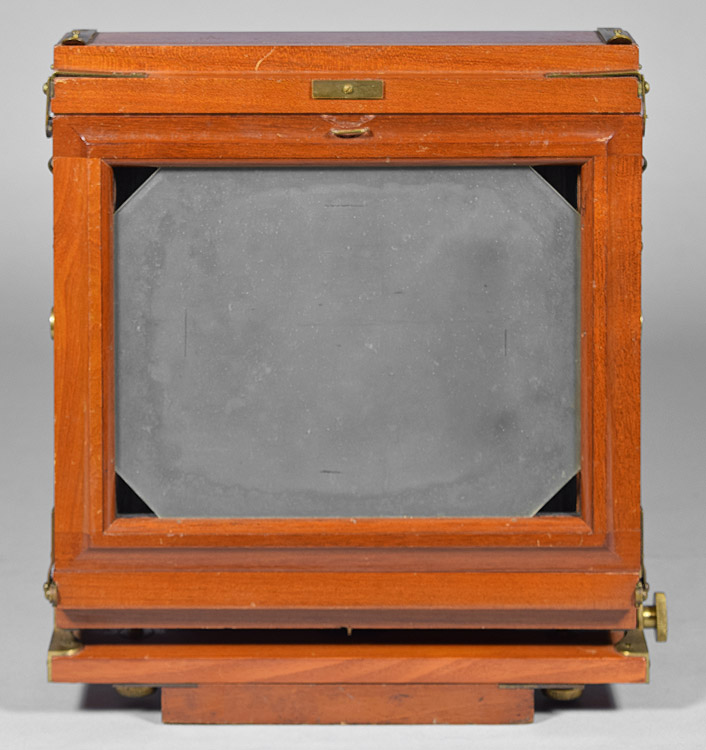
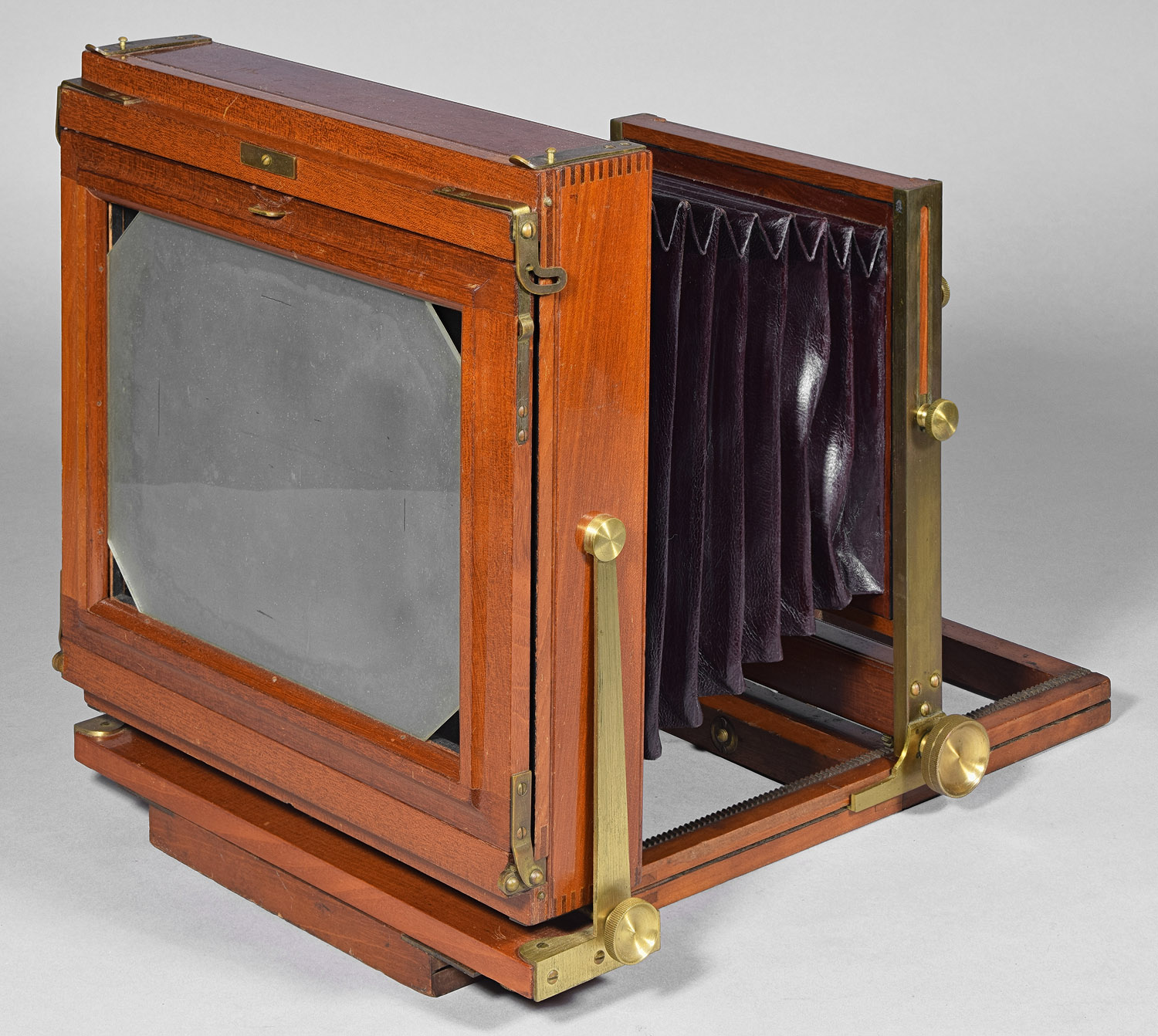
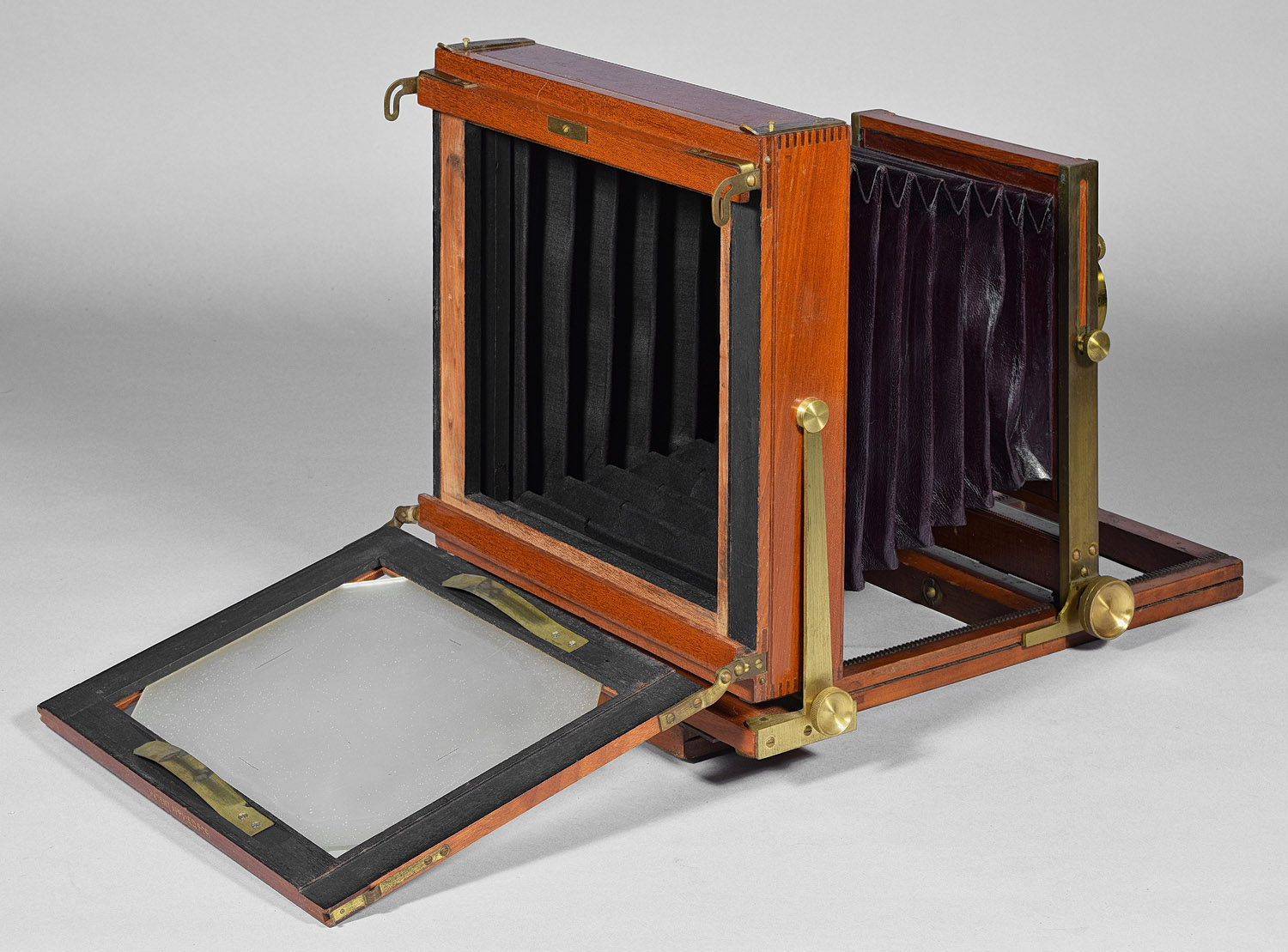
Label, celluloid, top front of the front
standard: "Made by The Eastman Company, Rochester, N.Y. U.S.A."

Stamp on the top edge of the hinged ground glass frame: "Patent Applied For".
Eastman doesn't appear to have used
this mechanism on any other cameras, so perhaps the patent application
was rejected. More likely is that the mechanism is very expensive
to produce. Later, they purchased The Blair Camera Co., which held
a patent for a spring back. Eastman also purchased The Rochester
Optical Co. (ROC), who used spring backs. By 1908, all of The
Eastman Kodak Co. view cameras were essentially ROC products including
their spring backs.

Serial numbers (No. 685) stamped on the
bottom of the main platform (bottom) and the front extension (top).

Canvas case
for four 6 ½ x 8 ½ holders
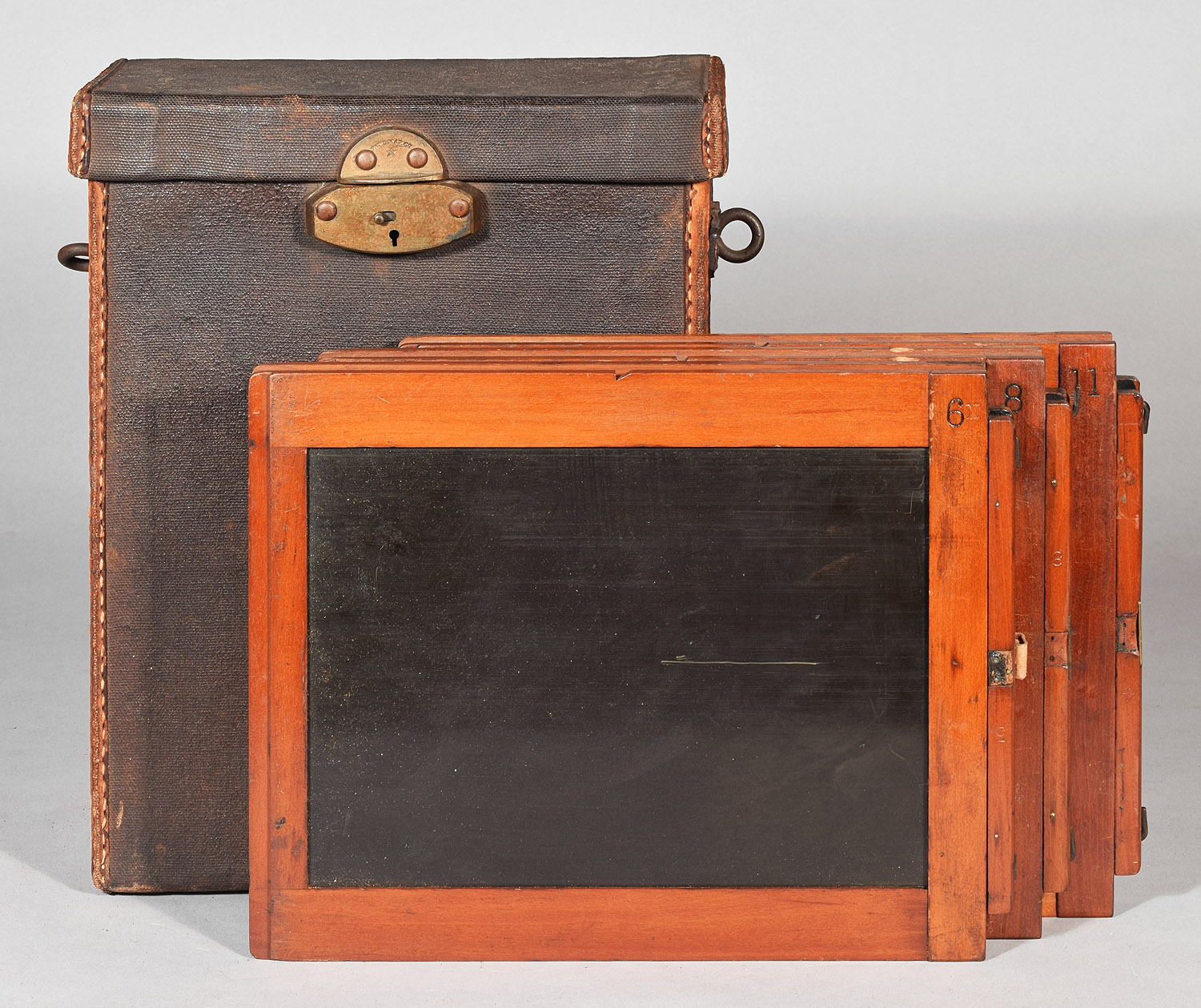
8 x 10 (The Eastman Co. (1889-1892)
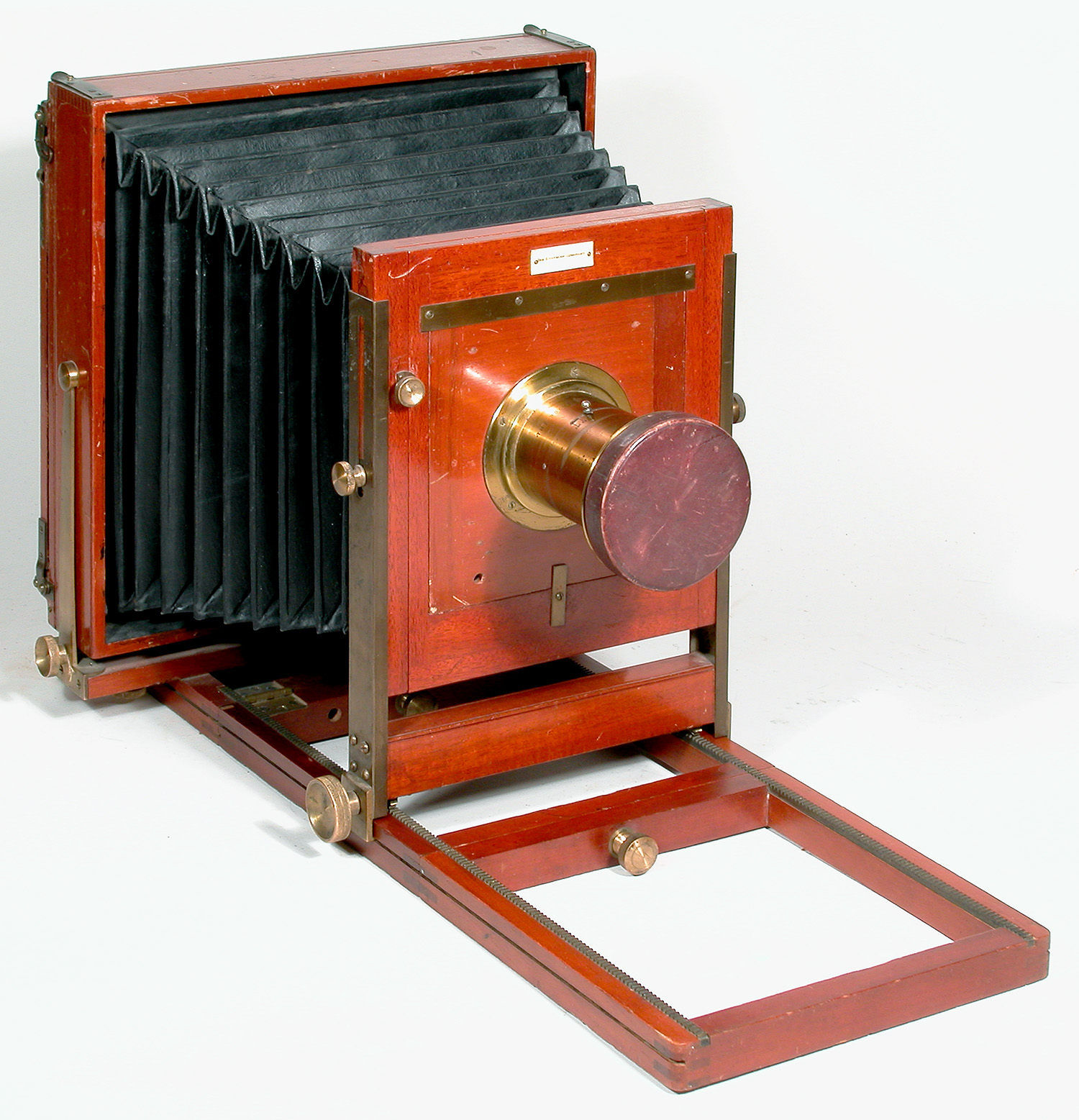
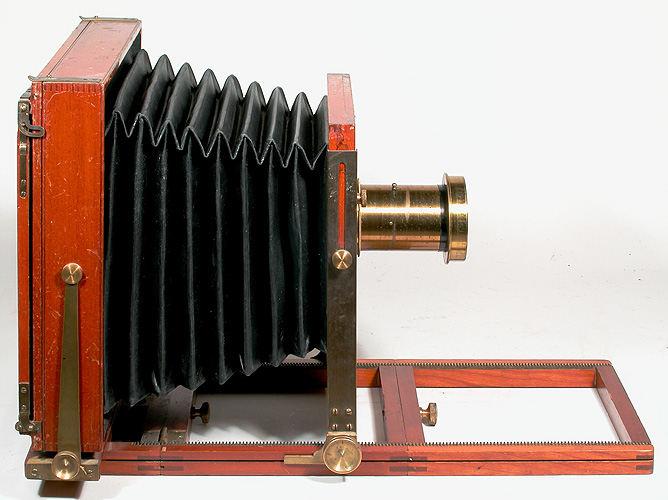
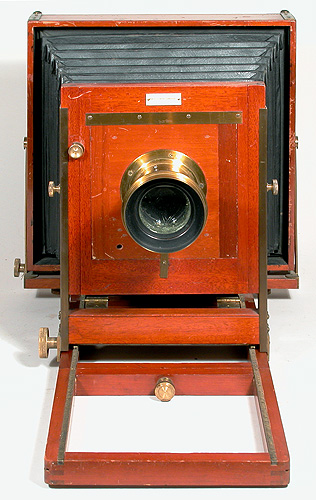
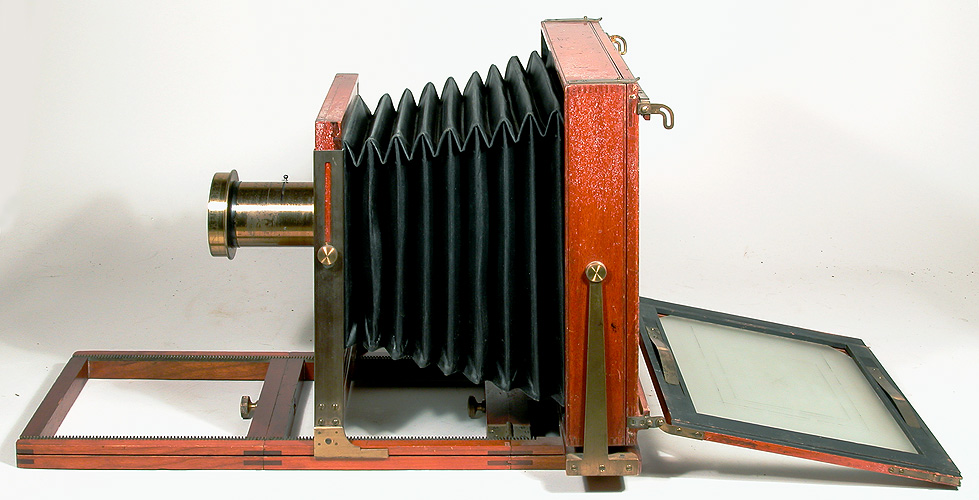
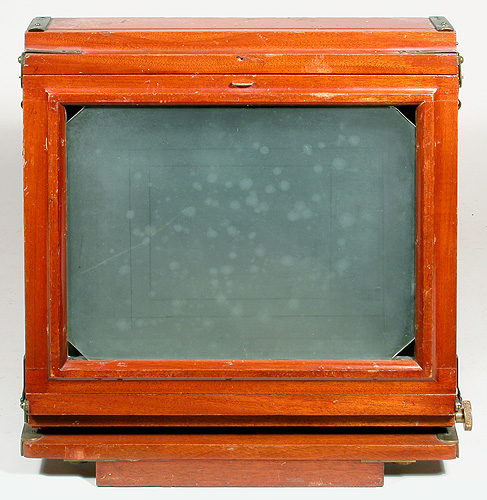
![]()